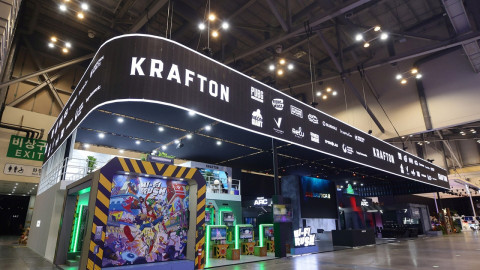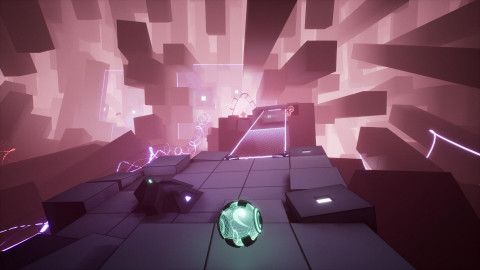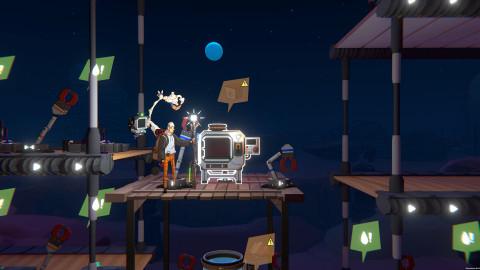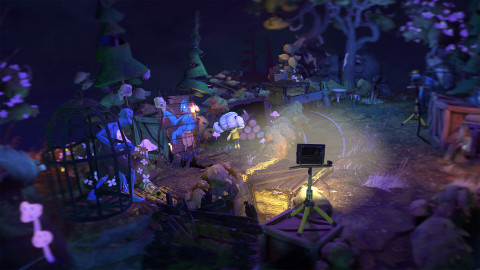
Back in 2006, a competitive Super Smash Bros Melee player known as GimpyFish uploaded a Bowser Combo video called "Boozer Cute" to Smashboards.com. Around that time in the Melee scene, GimpyFish was known for his competitive prowess with Bowser, a character pretty much everyone considered to be the worst in the game.
Even in its original low quality, there is something mesmerizing about watching Bowser gameplay with such lethal execution. Granted, this was back in 2006 and the overall level of Melee skill was much, much lower than it is today. Even watching it today, someone new to the game might watch this video and think Bowser is a good character.
Make no mistake, he isn't.
Why is Bowser so bad? For starters, Bowser is huge, which means he is easier to hit and combo. Secondly, he has the slowest jump animation in the game and tons of ending lag on most of his moves. His high-level gameplay plan isn't intuitive and there is no clear chain throw or combo string that Bowser can reliably set-up against the majority of characters. As a result, between two equally skilled opponents, Bowser's abysmal speed and slow jump-squat animation leave with him a huge disadvantage few players want to deal with.

But, to a player like GimpyFish, getting past these weaknesses would create a unique opportunity to be one of the only competitive players to truly master Bowser's strengths. Strengths like a fast and relatively safe Up-B that can be used out of shield as a "get off me" button. Bowser also has many active frames on his tilt-attacks, unique attack angles when on the ledge and his side-B is a command grab with an active hitbox -- relevant details to a Melee player looking to will Bowser into competitive viability.
In order to use these strengths, GimpyFish relies on his above-average ability to predict and read his opponents. For a character like Bowser, who is punished to the extreme every time he makes a mistake, strong reads and predictions are vital to both surviving the offensive onslaught of higher tier characters and also ensuring the maximum kill potential of Bowser's slow but powerful attacks.
Now, 14 years after the release of Boozer Cute, GimpyFish streams Bowser gameplay on Twitch.tv/62bitgaming. As he plays, his game knowledge and ability to read his opponent is on full display. On his stream, it is common to see Bowser destroying high tier characters and surprised opponents who are completely unprepared for the tricks, patience, and reads GimpyFish is known for.
Because Bowser is so slow and not very technical, GimpyFish can spend most of the match relying on instincts and fishing for hard reads. Without the pressure to perform elaborate shine-cancel or 10+ hit combos, Bowser slows down the pace of the match to a level that many amateur opponents aren't used to.
This is a common story for low-tier specialists. In order to have success with these characters, they have to, in most cases, drastically out-play their opponent and rely on match-up ignorance from the other side. It is often lamented by fans that "if only" these players picked a top-tier character, they could have won tournaments and enjoyed much larger recognition of their Melee skill.
But tier lists and fighting games aren't that simple, an idea new Melee players should grow accustomed to. The question arises -- are low tier character specialists burdened by weak characters, or are they made into more complete, well-rounded competitors because of them?
In 2020, Melee is no longer the party game it was in 2006. Thanks to slippi.gg, gamers around the world are experiencing competitive 1 vs. 1 Melee in a relatively lag-free environment online. It is a positive, but not unfamiliar moment in Melee's long and storied history; another new generation of Melee fans falling for the high-octane gameplay of a Gamecube classic that refuses to die.
This time around, these new players are exceedingly technical in their approach to learn the game. After all, they were first drawn to Melee by major tournaments or the personal stream of a professional Melee player -- tech skill and movement are precisely what draws them to Melee and what separates the title from its modern iterations.
However, this new generation has probably never heard of "Boozer Cute", The Hylian Nightmare, ShadowClaw, or any number of low-tier combo videos made infamous by the dedicated character specialist that created them. This isn't a slight against them, as there is little value in learning about low-tier characters when the majority of opponents players face online will be using the top 5 characters in the game.
Or is there?
It is much more common for new players to learn the basic techniques of high-tier characters and emulate the play-style of a proven pro than to spend countless hours trying to master their favorite low-tier character. In fact, many competitive players new to the scene appear frustrated whenever they are forced to play against a low-tier character, frequently leaving the game the moment they fall behind.
Some online players even leave the game immediately whenever they are faced with a low-tier character almost as if they don't want to waste time in a match-up they won't ever have to face in the first place.
Taj is a veteran Melee competitor from AZ known for absolute MewTwo mastery -- check out his stream at twitch.tv/tajazc.
Comically, it was the same player in both of these clips left the match before it even began. Does "Cliche" know they walked away from arguably the best Bowser and Mewtwo players in the world? Surely, this player would have felt challenged and likely learned a lot about Melee from playing these two opponents.
But those matches never happened, most likely due to the perceived pointlessness of playing against a low tier character. What type of matches is Cliche looking for instead? Likely one involving two high-tier characters doing movement options that look and feel like very high-level melee is taking place.
or maybe Cliche follows one of the best Melee players in the world and also can't be bothered with mid-tier match ups.
This type of attitude is becoming more common in the Melee scene, but it is adopted at a players' detriment. By limiting gameplay experiences to only the top-tier matches, they leave an entire layer of Melee knowledge and experience on the table.
In fighting games, it is possible to "default" into a playstyle that is easily predictable and over-reliant on a character's most powerful tools. Fighting games are all a mind game after all, but Melee is so fast-paced that players with sufficient tech skills can simply grind out a few top-tier pressure strings and destroy unprepared opponents.
These types of players are a nightmare for the amateur opponent who simply can't react fast enough, but to a veteran Melee player, they are orders of magnitude easier to defeat. Their slew of bad habits and flow-chart movement is easy to spot: play one online Falco and you've played nearly all of them.
Players stuck in a flow chart have an easy remedy -- they can play a low-tier character for a week and learn precisely how sloppy their gameplay actually is. Almost instantly, novice players will notice all of the predictable spot-dodges or rolls they used to get away with are now punished heavily thanks to their low-tier characters slower speed and worse frame data. One by one, the bad habits must be confronted, as winning with a low-tier character can often feel like a war of attrition. Each hit must be earned in every sense of the word.
New strategies and new approaches to the game are hammered into a competitor's playstyle after they have mastered a variety of different characters. These lessons carry over into their higher tier characters, who are only made more lethal thanks to some new tricks and game knowledge at their disposal.
Borp isn't the most successful Shiek player in the world. He has competed in around 19 or so tournaments, winning one of them and eventually ranking 6th in the Spring 2018 Pittsburgh Melee Power Rankings.
But despite his unremarkable achievements in Melee, Borp has become somewhat of a cult icon among the smash community. His Shiek style is extremely untechnical and, every time he plays, the crowd seems mesmerized by his basic decision making and slow place of play.
In one Fox mirror match, Borp lands an up smash, stands still, and then fires one single standing laser that connects. The commentators then erupt in excitement, as if Borp just pulled off an incredible hype maneuver. There is a novel factor in Borp's gameplay, so much so that watching him becomes inexplicably entertaining.
This element of surprise is why a player like Borp manages to get in people's heads and defeat opponents in surprisingly simple ways. Burp's style is unique enough that many players don't understand why they are losing. Because he doesn't move in the frantic style most Melee players are used to, the pace of the game is slowed down and Borp can focus on what he does do well -- chain grabs, tech chases, and hard reads.
The case of Borp illustrates that winning in Melee isn't nearly as linear as people make it out to be. Tech skills and speed are important, but so is finding a playstyle that works for you. Every character is competitive if the player wielding them is competitive and there can be lot to gain from playing as (and against) a low-tier character.
The esports community has already witnessed players like Axe and aMSa force the Melee community to acknowledge the potential of lower-tier characters like Pikachu and Yoshi. This alone teaches us that Melee isn't a "solved" game yet and the right character mixed with the right player can produce novel results.
And yet, new players continue to flock to the same top-tier characters that, at this point, take herculean mechanical skills to surprise anyone with. Competitive Melee is so far in its lifespan that the comically high power-level of a character like Fox or Marth can be reliably neutralized thanks to community knowledge and experience. Ask any Melee player -- their most experienced (and as a result, confident) match-ups are almost always one that involves one of the top 5 characters in the game.
So if both players are equally skilled and both players have advanced match-up knowledge on each other's characters, doesn't it make sense to occasionally look to the character select screen for an edge? A recent match during the Ludwig Ahgren Championship Series between two Marth players demonstrates this idea perfectly.
The green Marth, Rishi, is facing the red Marth, Kuyashi. Rishi looks out-paced in the Marth vs. Marth matchup, losing two games matches back to back on the battlefield. Kuyahsi maintained a 1-stock lead throughout the majority of the match.
Then, Rishi decides to switch things up. He switches to Donkey Kong and within the first 3 seconds of the match, Kuyashi's matchup inexperience leads to a haphazard attack onto a crouch-canceling Donkey Kong. Donkey Kong's weight allows him to brush off the attack easily and immediately counter with a grab.
15 seconds later, Rishi is already up a stock. He would then go onto win the match 3-2.
Three straight wins against an equally skilled S-tier character using opponent with 17th worst character in the game. Rishi's Marth playstyle was simply not working against Kuyashi and the switch to a lower-tier character was precisely what he needed to come back and win the set.
In this example, Rishi won precisely because of his mastery and knowledge of low-tier characters. Kuyashi, on the other hand, lost due to a low-tier blindspot. How many more tournament players are secretly vulnerable to a low-tier character specialist or a unique playstyle they haven't encountered before? How many more Melee players can significantly increase their tournament win percentages by mastering a low-tier character for the occasional surprise win?
My guess is a lot more than we might expect.
Head to our home page for our latest gaming and esports content!
Find full schedules, brackets, and more for your favorite esports on Juked.gg!
-

Warcraft 3 is my one true love and I will challenge anyone to a game of Super Smash Brothers Melee.
Sort by:
Comments :0





